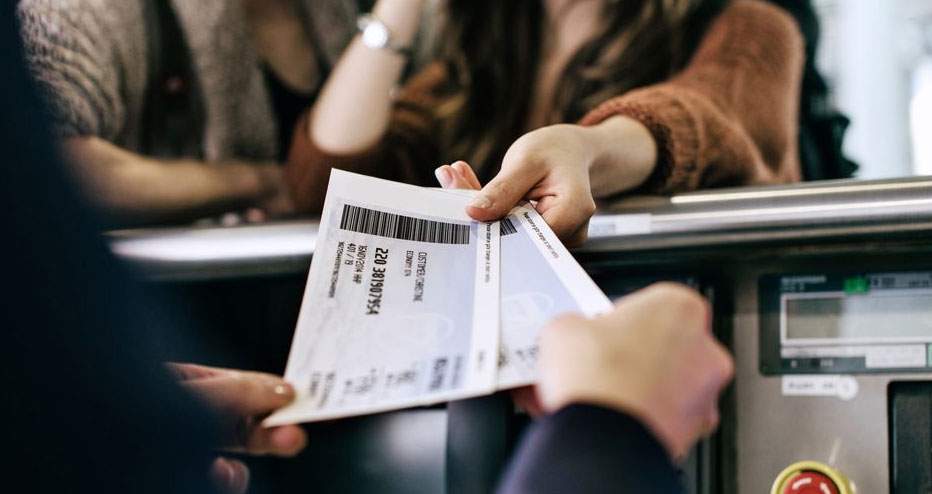The ways of refunding tickets for museums, exhibitions and shows decided by Article 88 of the “Cura Italia” dl are not convincing. Expressing opposition to the path chosen by the government is Isabella Ruggiero, president of AGTA - Association of Licensed Tourist Guides.
In fact, Article 88 of the decree law stipulates that anyone who has purchased a ticket for a show, museum or other cultural venue will have to submit a request for reimbursement, with the title of purchase attached, within 30 days of the date of entry into force of the “Cura Italia,” and the seller, within 30 days of the submission of the application, willissue a voucher of equal amount, to be used within one year of issuance.
“We can understand the government’s rationale for choosing to issue vouchers instead of returning the money: given the large sums that museum closures cause the state, the voucher solution minimizes losses,” Ruggiero says. “We think, however, that the reasoning, based on hic et nunc calculations, we will discount later. Because, if all experts agree that it will be crucial to implement an intelligent strategy to revive our country’s tourism, it will not favor us to compare with other nations.”
The comparison, then, is with what is happening in other countries: “one only has to enter the Louvre’s website,” Ruggiero points out, “to be immediately informed in English that everyone who had purchased a ticket will be automatically refunded. Not only do users receive the refund in money, not only do they receive it automatically without doing anything, but the notice is the first thing you see on the home page. Also abroad but closer to home, the Vatican Museums have also provided automatic refunds. Foreigners will make the comparisons. Now the state saves money but in terms of image, credibility and promotion we will lose out.”
Consequently, according to Ruggiero, the conditions of the reimbursement are “unacceptable,” for four reasons. First, “the user should not be forced to apply for a refund; the refund should be automatic.” Second, Ruggiero argues, “it is absurd to not only force the user to apply, but even within 30 days.” Third, “the DL creates extreme confusion, since it imposes on the buyer thirty days to apply and on the seller 30 days from the submission of the application to issue the voucher, all while the museums are still closed and it is not known when they will be reopened. The reopening will almost certainly occur after the deadlines associated with this DL, so another one will be needed, further confusing the dates. And all this while a DPCM has decreed the activities of museum and monument managers ’non-essential’ and thus closed their offices, forcing them into smart working (which is certainly not identical to office work).” Finally, according to Ruggiero, “it is incorrect to equate site tickets with exhibition tickets.”
The 30-day limit, the AGTA president points out, means that “if one does not see the notice in time or fails to submit the application in time, one will not be able to have the voucher. On many museum and monument websites to date nothing has been announced yet. Of course, it is not necessary for the operator to communicate something on the website. One can safely submit applications following what is written in the DL Cura Italia. Certainly all agencies and all professionals in the field are fully informed and will do so in time. However, this will not be the case for all those individual foreign tourists who do not read the full texts of the Italian DLs.”
This is why Ruggiero calls Article 88 “extremely unfair” because it is aimed at conditioning “reimbursement to the request, trying to get as few voucher requests as possible, with a myopic view of tourism.” For AGTA’s president, these are reasons of communication and image: “we know very well that 18-40 euros for 1-4 Colosseum tickets do not affect the economy of a German or American family. The point is what the government and MIBACT want to communicate. They say we need to put in place strategies and invest for post-emergency tourism. So the voucher could have been a small tourism promotion tool, to entice those who had planned a vacation in Italy in these months to plan it again within a year. Sending it automatically costs the state nothing if that person does not come at all, while if he or she decides to come back the MIBACT will spend 18-40 euros, which, however, would earn Italy a vacation for 2-4 people (hotels, restaurants, other monuments, etc.).”
Finally, Ruggiero concludes, there is the problem of tickets for temporary exhibitions. “If a visitor is interested in the Uffizi now, he will also be interested in 6 months from now, it just depends on his ability to travel. In the case of exhibitions, it is not certain that someone who bought tickets for Raphael will be interested in the exhibitions that will be hosted at Scuderie del Quirinale in the following months. In this case, the return of the sum would have been due. We have to decide whether strategy, promotion, enhancement, communication, should remain words to be used for propaganda or whether we also want to use them in writing the articles of laws.”
 |
| Isabella Ruggiero (AGTA president): unacceptable to reimburse tickets with vouchers, image damage for Italy |
Warning: the translation into English of the original Italian article was created using automatic tools. We undertake to review all articles, but we do not guarantee the total absence of inaccuracies in the translation due to the program. You can find the original by clicking on the ITA button. If you find any mistake,please contact us.